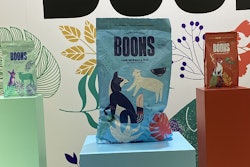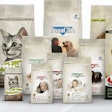
Net sales for J.M. Smucker’s pet food and treats segment increased by US$43.5 million or 6% in the fourth quarter of the company’s fiscal year 2022 to reach US$718.1 million. Last year during the same quarter, Smucker pet segment profit was US$674.6 million. Smucker released its financial results for the fourth quarter of its 2022 fiscal year, which ended April 30, 2022. Smucker’s pet segment profit stood at US$120.7 for the quarter, up 19%. Profit margin was 16.8%. Excluding US$24.4 million of noncomparable net sales in the prior year related to the divested private label dry pet food business, net sales increased US$67.9 million, or 10%.
For fiscal year 2022 overall, Smucker’s pet segment net sales declined to US$2,764.3 million from US$2,844.5 million in fiscal year 2021. Segment profit declined to US$395.9 from US$487.0 last fiscal year. Increased commodity and ingredient, manufacturing, and transportation costs challenged Smucker like many other dog, cat and other pet food companies.
These financial results reflect the divestitures of Smucker’s private label dry pet food business on December 1, 2021 and the Natural Balance business on January 29, 2021.
“In pet foods, growth across all categories drove a 10% increase in comparable net sales versus the prior year,” Mark Smucker, president and CEO of the J.M. Smucker Company, said in a prepared statement. “Our strong finish in pet foods was driven by growth of 22% for cat food, 8% for dog snacks, and 7% for dog food. Our growth in cat food and dog snacks reflects our increased focus on prioritizing and accelerating growth in these segments.
“In cat food, Meow Mix sales grew 29% benefiting from higher pricing and volume,” said Smucker. “Meow Mix gained nearly 3 points of share in the quarter, growing over 2x the category rate. Meow Mix is now the number one dry cat food brand in America in the latest 52-week period. The journey for this brand continues to be incredible as it finished off a phenomenal year as the fastest growing brand in our portfolio in the fourth quarter.
Smucker pet snack sales
“In pet snacks, Milk-Bone sales grew 15%. This growth reflects the benefits of net pricing to recover increased costs, volume growth, improved marketing and sales execution, and contributions from premium positioned innovation. The Milk-Bone brand continues to drive growth for our market-leading dog snacks business. The brand gained a full point of dollar share in the quarter and grew over 2.5x the category rate.
“And in dog food, net sales for Nutrish grew 14%. We are expanding the brand into faster growing segments such as wet dog food and dog snacks, and continue to refine our assortment consistent with consumer preferences. We plan to upgrade Nutrish dog food formulations with improved nutrition credentials in the back half of fiscal 2023. The launch will be supported by a new advertising campaign that showcases the brand’s purpose to provide all dogs the highest quality of life.”


















